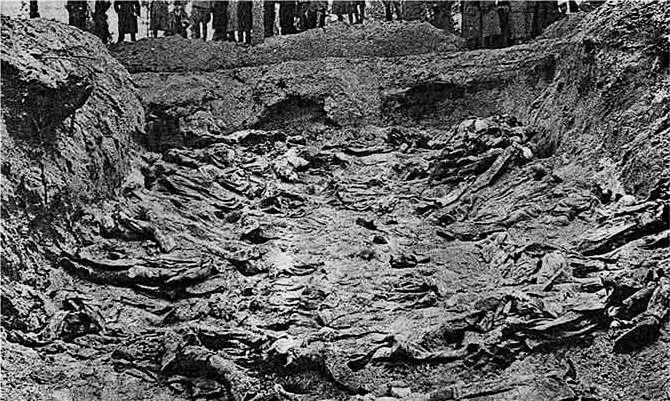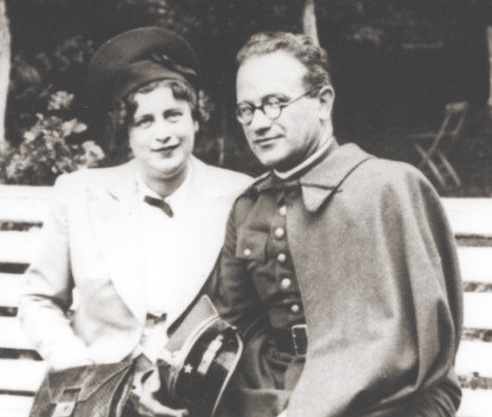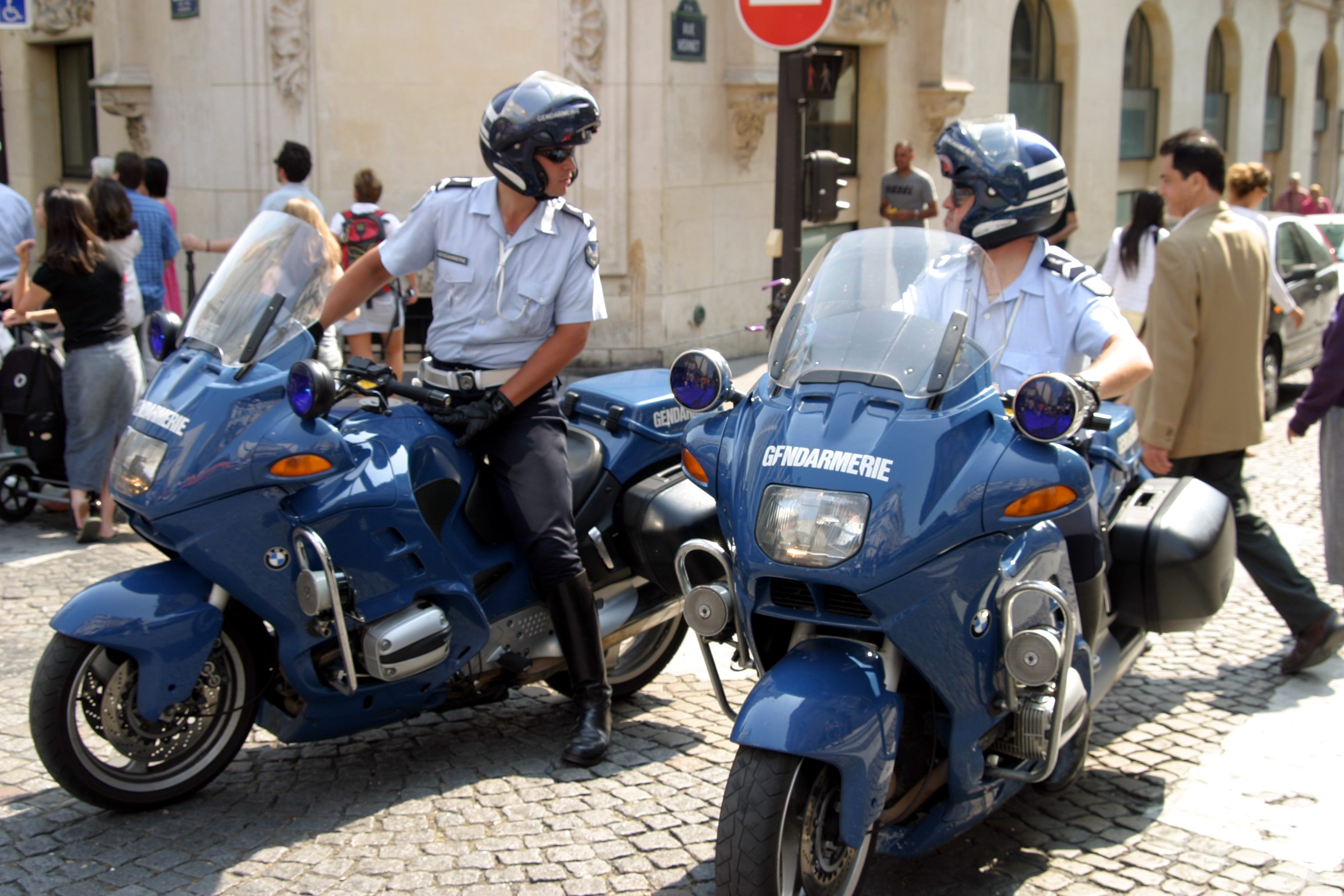|
Katyn Massacre
The Katyn massacre, "Katyń crime"; russian: link=yes, Катынская резня ''Katynskaya reznya'', "Katyn massacre", or russian: link=no, Катынский расстрел, ''Katynsky rasstrel'', "Katyn execution" was a series of mass executions of nearly 22,000 Polish military officers and intelligentsia prisoners of war carried out by the Soviet Union, specifically the NKVD ("People's Commissariat for Internal Affairs", the Soviet secret police) in April and May 1940. Though the killings also occurred in the Kalinin and Kharkiv prisons and elsewhere, the massacre is named after the Katyn Forest, where some of the mass graves were first discovered by German forces. The massacre was initiated in NKVD chief Lavrentiy Beria's proposal to Joseph Stalin to execute all captive members of the Polish officer corps, which was secretly approved by the Soviet Politburo led by Stalin. Of the total killed, about 8,000 were officers imprisoned during the 1939 Soviet invas ... [...More Info...] [...Related Items...] OR: [Wikipedia] [Google] [Baidu] |
Polish Prisoners-of-war In The Soviet Union After 1939
As a result of the Soviet invasion of Poland in 1939, hundreds of thousands of Polish soldiers became prisoners of war. Many of them were executed; 22,000 Polish military personnel and civilians perished in the Katyn massacre alone. Fischer, Benjamin B.,The Katyn Controversy: Stalin's Killing Field, '' Studies in Intelligence'', Winter 1999-2000. Soviet invasion of Poland On September 17, 1939, the Red Army invaded the territory of Poland from the east. The invasion took place while Poland was already sustaining serious defeats in the wake of the German attack on the country that started on September 1, 1939. The Soviets moved to safeguard their claims in accordance with the Molotov–Ribbentrop Pact. Encyklopedia PWNbr>'KAMPANIA WRZEŚNIOWA 1939', last retrieved on 10 December 2005, Polish language During the Red Army's rapid advance, about 6,000–7,000 Polish soldiers died in the fighting, [...More Info...] [...Related Items...] OR: [Wikipedia] [Google] [Baidu] |
Katyn Forest
Katyn (russian: Кáтынь; pl, Katyń ) is a rural locality (a '' selo'') in Smolensky District of Smolensk Oblast, Russia, located approximately to the west of Smolensk, the administrative center of the oblast. The village had a population of 1,737 in 2007. Geography It is situated to the west of the city of Smolensk (about 18 km from its center) and circa 60 km from the Russian borders with Belarus. It has a station on the Berlin-Warsaw-Minsk-Moscow international railway line. Climate Katyn has a warm-summer humid continental climate (''Dfb'' in the Köppen climate classification). History Before World War I, Gnezdovo with the Katyn Forest belonged to the Koźliński family. In the 19th century, Piotr Koźliński married Leokadia Lefftreu, the daughter of the director of the English railway construction company in Russia. Under the marriage articles Gniezdovo and Katyn became co-owned by the British. Katyn massacre The Katyn Forest, in the vicinity of the v ... [...More Info...] [...Related Items...] OR: [Wikipedia] [Google] [Baidu] |
Katyn (rural Locality)
Katyn (russian: Кáтынь; pl, Katyń ) is a rural locality (a '' selo'') in Smolensky District of Smolensk Oblast, Russia, located approximately to the west of Smolensk, the administrative center of the oblast. The village had a population of 1,737 in 2007. Geography It is situated to the west of the city of Smolensk (about 18 km from its center) and circa 60 km from the Russian borders with Belarus. It has a station on the Berlin- Warsaw- Minsk- Moscow international railway line. Climate Katyn has a warm-summer humid continental climate (''Dfb'' in the Köppen climate classification). History Before World War I, Gnezdovo with the Katyn Forest belonged to the Koźliński family. In the 19th century, Piotr Koźliński married Leokadia Lefftreu, the daughter of the director of the English railway construction company in Russia. Under the marriage articles Gniezdovo and Katyn became co-owned by the British. Katyn massacre The Katyn Forest, in the vici ... [...More Info...] [...Related Items...] OR: [Wikipedia] [Google] [Baidu] |
Mass Grave
A mass grave is a grave containing multiple human corpses, which may or may Unidentified decedent, not be identified prior to burial. The United Nations has defined a criminal mass grave as a burial site containing three or more victims of execution, although an exact definition is not unanimously agreed upon. Mass graves are usually created after many people die or are killed, and there is a desire to bury the corpses quickly for sanitation concerns. Although mass graves can be used during major conflicts such as war and crime, in modern times they may be used after a famine, epidemic, or natural disaster. In disasters, mass graves are used for infection and disease control. In such cases, there is often a breakdown of the social infrastructure that would enable proper identification and disposal of individual bodies. History Mass or communal burial was a common practice before the development of a dependable crematory chamber by Ludovico Brunetti in 1873. In ancient Rome waste a ... [...More Info...] [...Related Items...] OR: [Wikipedia] [Google] [Baidu] |
Baruch Steinberg
Baruch or Boruch Steinberg (17 December 1897–after 9 April 1940) was a Polish rabbi and military officer. He was Chief Rabbi of the Polish Army during German invasion of Poland and Soviet invasion of Poland in 1939 and was murdered by the Soviet Union in the Katyn massacre in April 1940. Biography Baruch Steinberg was born on 17 December 1897 in the town of Przemyślany (now Peremyshliany, Ukraine) to a Polish Jewish family with tradition of rabbinical service (his father and grandfather were rabbis and three of his brothers would also become rabbis). During the First World War his family moved to Vienna; there in 1916 he was elected a rabbi, passing the required examinations in the following year and returning to Przemyślany. He joined the Polish Military Organisation, providing services for Polish Jewish soldiers. In November 1918 he volunteered to join Polish forces in the Polish-Ukrainian war, he fought alongside the Polish forces in the battle of Lwów and remaine ... [...More Info...] [...Related Items...] OR: [Wikipedia] [Google] [Baidu] |
Rabbi
A rabbi () is a spiritual leader or religious teacher in Judaism. One becomes a rabbi by being ordained by another rabbi – known as ''semikha'' – following a course of study of Jewish history and texts such as the Talmud. The basic form of the rabbi developed in the Pharisees, Pharisaic (167 BCE–73 CE) and Talmudic (70–640 CE) eras, when learned teachers assembled to codify Judaism's written and oral laws. The title "rabbi" was first used in the first century CE. In more recent centuries, the duties of a rabbi became increasingly influenced by the duties of the Clergy, Protestant Christian minister, hence the title "pulpit rabbis", and in 19th-century Germany and the United States rabbinic activities including sermons, pastoral counseling, and representing the community to the outside, all increased in importance. Within the various Jewish denominations, there are different requirements for rabbinic ordination, and differences in opinion regarding who is recognized as ... [...More Info...] [...Related Items...] OR: [Wikipedia] [Google] [Baidu] |
History Of The Jews In Poland
The history of the Jews in Poland dates back at least 1,000 years. For centuries, Poland was home to the largest and most significant Ashkenazi Jewish community in the world. Poland was a principal center of Jewish culture, because of the long period of statutory religious tolerance and social autonomy which ended after the Partitions of Poland in the 18th century. During World War II there was a nearly complete genocidal destruction of the Polish Jewish community by Nazi Germany and its collaborators of various nationalities, during the German occupation of Poland between 1939 and 1945, called the Holocaust. Since the fall of communism in Poland, there has been a renewed interest in Jewish culture, featuring an annual Jewish Culture Festival, new study programs at Polish secondary schools and universities, and the opening of Warsaw's Museum of the History of Polish Jews. From the founding of the Kingdom of Poland in 1025 until the early years of the Polish–Lithuan ... [...More Info...] [...Related Items...] OR: [Wikipedia] [Google] [Baidu] |
Belarusians
, native_name_lang = be , pop = 9.5–10 million , image = , caption = , popplace = 7.99 million , region1 = , pop1 = 600,000–768,000 , region2 = , pop2 = 521,443 , region3 = , pop3 = 275,763 , region4 = , pop4 = 105,404 , region5 = , pop5 = 68,174 , region6 = , pop6 = 66,476 , region7 = , pop7 = 61,000 , region8 = , pop8 = 41,100 , region9 = , pop9 = 31,000 , region10 = , pop10 = 20,000 , region11 = , pop11 = 15,565 , region12 = , pop12 = 12,100 , region13 = , pop13 = 11,828 , region14 = , pop14 = 10,054 , region15 = , pop15 = 8,529 , region16 = , pop16 = 7,500 ... [...More Info...] [...Related Items...] OR: [Wikipedia] [Google] [Baidu] |
Ukrainians
Ukrainians ( uk, Українці, Ukraintsi, ) are an East Slavic ethnic group native to Ukraine. They are the seventh-largest nation in Europe. The native language of the Ukrainians is Ukrainian. The majority of Ukrainians are Eastern Orthodox Christians. While under the Polish–Lithuanian Commonwealth, the Austrian Empire, and then Austria-Hungary, the East Slavic population who lived in the territories of modern-day Ukraine were historically known as Ruthenians, referring to the territory of Ruthenia, and to distinguish them with the Ukrainians living under the Russian Empire, who were known as Little Russians, named after the territory of Little Russia. Cossack heritage is especially emphasized, for example in the Ukrainian national anthem. Ethnonym The ethnonym ''Ukrainians'' came into wide use only in the 20th century after the territory of Ukraine obtained distinctive statehood in 1917. From the 14th to the 16th centuries the western portions of the Europe ... [...More Info...] [...Related Items...] OR: [Wikipedia] [Google] [Baidu] |
Gendarmes
Wrong info! --> A gendarmerie () is a military force with law enforcement duties among the civilian population. The term ''gendarme'' () is derived from the medieval French expression ', which translates to "men-at-arms" (literally, "armed people"). In France and some Francophone nations, the gendarmerie is a branch of the armed forces that is responsible for internal security in parts of the territory (primarily in rural areas and small towns in the case of France), with additional duties as military police for the armed forces. It was introduced to several other Western European countries during the Napoleonic conquests. In the mid-twentieth century, a number of former French mandates and colonial possessions (such as Lebanon, Syria, the Ivory Coast and the Republic of the Congo) adopted a gendarmerie after independence. A similar concept exists in Eastern Europe in the form of Internal Troops, which are present in many countries of the former Soviet Union and it ... [...More Info...] [...Related Items...] OR: [Wikipedia] [Google] [Baidu] |
Intelligence Agent
Espionage, spying, or intelligence gathering is the act of obtaining secret or confidential information (intelligence) from non-disclosed sources or divulging of the same without the permission of the holder of the information for a tangible benefit. A person who commits espionage is called an ''espionage agent'' or ''spy''. Any individual or spy ring (a cooperating group of spies), in the service of a government, company, criminal organization, or independent operation, can commit espionage. The practice is clandestine, as it is by definition unwelcome. In some circumstances, it may be a legal tool of law enforcement and in others, it may be illegal and punishable by law. Espionage is often part of an institutional effort by a government or commercial concern. However, the term tends to be associated with state spying on potential or actual enemies for military purposes. Spying involving corporations is known as industrial espionage. One of the most effective ways to gat ... [...More Info...] [...Related Items...] OR: [Wikipedia] [Google] [Baidu] |
Polish Intelligentsia
The intelligentsia is a status class composed of the university-educated people of a society who engage in the complex mental labours by which they critique, shape, and lead in the politics, policies, and culture of their society; as such, the intelligentsia consists of scholars, academics, teachers, journalists, and literary writers. Conceptually, the intelligentsia status class arose in the late 18th century, during the Partitions of Poland (1772–1795). Etymologically, the 19th-century Polish intellectual Bronisław Trentowski coined the term ''inteligencja'' (intellectuals) to identify and describe the university-educated and professionally active social stratum of the patriotic bourgeoisie; men and women whose intellectualism would provide moral and political leadership to Poland in opposing the cultural hegemony of the Russian Empire. In pre–Revolutionary (1917) Russia, the term ''intelligentsiya'' (russian: интеллигенция) identified and described the ... [...More Info...] [...Related Items...] OR: [Wikipedia] [Google] [Baidu] |







